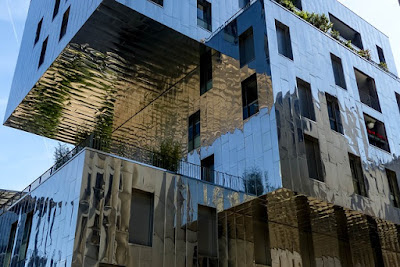Isn’t it time to think and opt for the deed that could help you in making a contribution to the healthy environment? If so? Then it’s for you, for you to pay attention towards 5 hi-tech techniques around the world for green building provided by Alex Abossein.
Here are the following 5 hi-tech techniques for green building:
Tempest Water Administration
Tempest water administration means to moderate disintegration’s in rustic ranges and surges in urban areas achieved by sudden defeats of rain or snow. This is finished via arranging regions so as to deal with the enormous volumes of water in the wake of overwhelming tempests and snow falls. There are many Tempest water administration practices, and one of these is utilizing plants through the green foundation. Plants, regardless of whether in little holders, in strips on the ground or on green rooftops, help ingest water and filter. It is the process tempest water goes through the greenery and the dirt.
Low-Emittance Windows and Shrewd Glass
New materials are created as shrewd, supportable overhauls of customary materials. As they adequately manage the characteristic components. For example, a green rendition of windows is low-emittance windows, which are covered with metallic oxide. To obstruct the sun’s cruel beams amid summer and keep the warmth inside in the winter. More than serving the traditional capacity of windows, low-emittance windows essentially cut down HVAC costs. A more propelled rendition of this, which still can’t seem to be generally and monetarily accessible, is brilliant glass, otherwise called electro chromic glass.
Cool Rooftops
Like low-emittance windows and brilliant glass, cool rooftops reflect daylight and warmth away. Made of unique tiles and intelligent paint, cool rooftops have elevated amounts of sunlight based reflectance and warm emittance, which cooperate to assimilate less warmth. This keeps the structures underneath cooler, along these lines bringing down vitality utilize and conveying solace to the inhabitants. On the aggregate level, cool rooftops help diminish the warmth island impact in urban zones. Additionally, in light of the lessened vitality utilization, cool rooftops diminish the measure of ozone-depleting substance discharges.
Zero-Vital Structures
According to Alex Abossein, zero-vitality structures are extraordinarily outlined and designed to depend on inexhaustible wellsprings of vitality. For example, sunlight based and wind control, enabling them to work autonomously on the electrical framework. This green plan spares vitality, as well as keeping extra ozone-depleting substance outflows. A zero-vitality configuration uses sunlight based cells and boards, wind turbines, and biofuels, among others. To accommodate the building’s power and HVAC needs. While zero-vitality structures are more costly forthright. The long haul advantages of vitality sparing and maintainable business homes. Force organizations to think of it as a sound speculation.
Green Engineering with Cross-Ventilation
Essentially tweaking a building plan can save money on vitality utilize and advantage tenants by exploiting nearby light and air. For example, one of the developmental patterns for structures and condos in urban areas. Taken from the words “lumen” which means light and “Ventus” which means the wind. This green engineering, configuration permits the free stream of characteristic light and air into elevated structure condos.
These were the following points provided by Alex Abossein that could help you to seek 5 hi-tech techniques around the world for green building. So it’s time to think differently and act unique.









